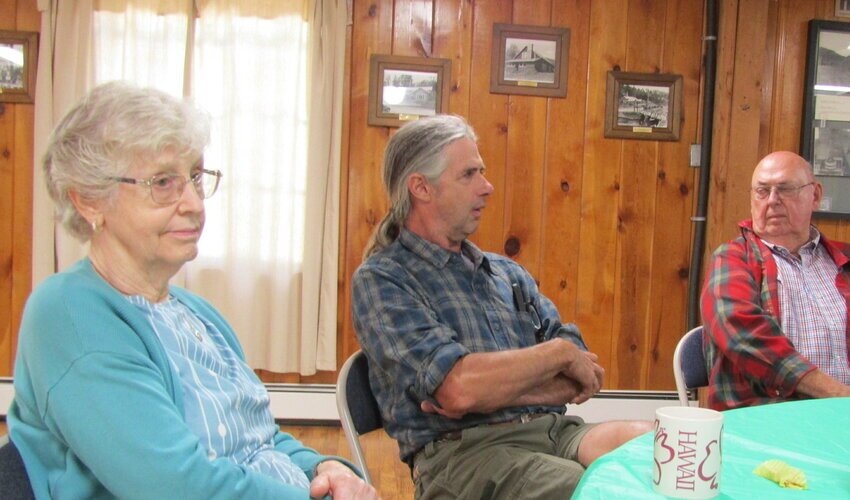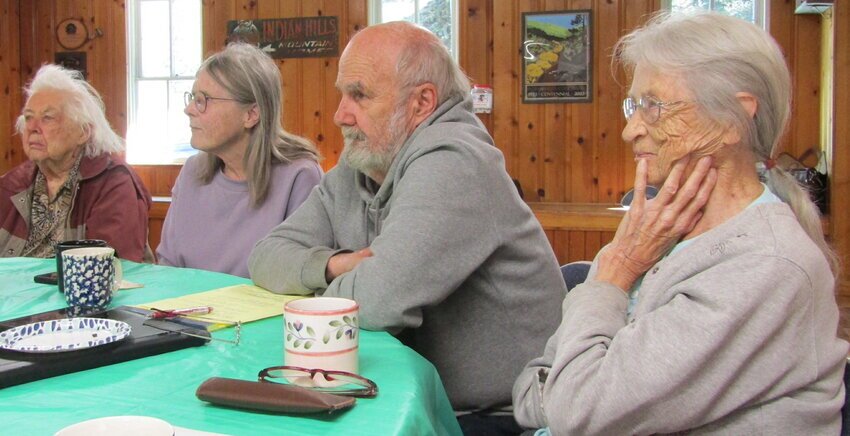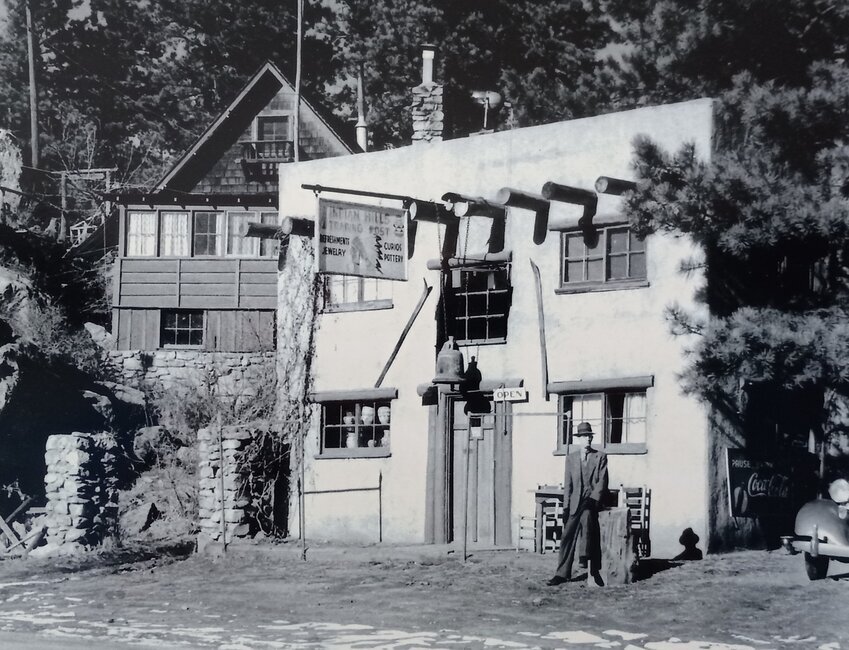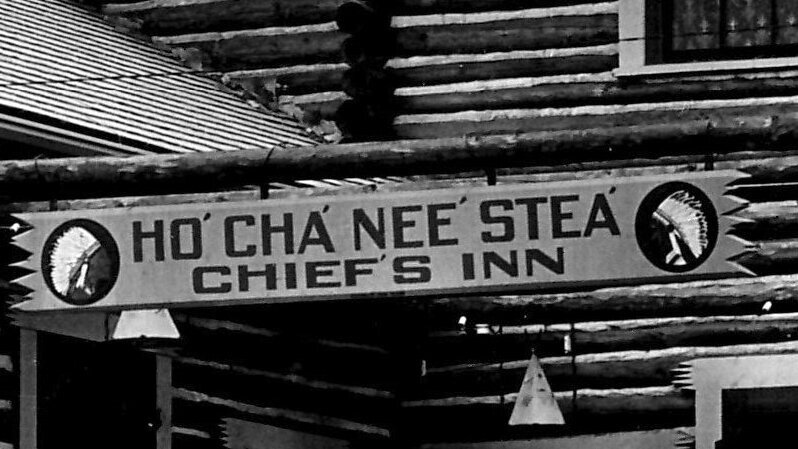Indian Hills celebrates its centennial: Residents tout its community atmosphere, beauty

INDIAN HILLS, Colo. — Talk to Indian Hills residents, and it’s apparent they love their town. While it has changed since its official start in 1923, it still has the same community feel.
It’s a place where locals come out for the Fourth of July parade, a hometown staple since 1923. It’s where they have Thursday morning pancake breakfasts at the Indian Hills Community Center and everyone is welcome — whether oldtimer or newcomer.
Indian Hills is celebrating its 100th birthday Aug. 18-20 with a barbecue, open house at the community center, sealing of a time capsule and more.
“I hope I’m able to stay here,” said Charlotte Samuelson, who moved to Indian Hills in 1970. “There are so many wonderful people.”
Although she was leery about moving to Indian Hills at first, “it didn’t take long to love it.”
“I would never leave,” said Angie Oliver-Reed, who moved to Indian Hills in 1991. “The whole place is magical.”
Max Lankston said after getting married in Seattle in 1965, his wife wanted to show him where she spent her summers as a girl, so they traveled to Indian Hills, fell in love with the place and bought a cabin.
“We decided this is the place we wanted to be,” Lankston said.
Early history
The Indian Hills Improvement Association’s website provides an extensive history of the area. The following are excerpts:
The first people to settle the area came in the 1860s to the area first called the North Fork of Turkey Creek and then Parmalee Gulch after one of the earliest settlers in the valley, John D. Parmalee. He owned the Denver and Turkey Creek Wagon Road Co. and constructed a wagon road leading from Denver through Turkey Creek Canyon toward South Park, according to the website.
In 1918, George Olinger of Olinger Mortuaries in Denver began to buy land to develop summer cabins, to be called Indian Hills, the history said.
“Olinger bought the 160-acre quarter-section at the mouth of Parmalee Gulch and christened it Arrowhead Park, the first filing of Indian Hills, in 1923,” the history said. “Large billboards were placed at the Turkey Creek and Bear Creek entrances to Parmalee Road advertising ‘Indian Hills for Your Mountain Home.’”
Ho’ Cha’ Nee’ Stea’, or Chief’s Inn, a tea room and soda fountain, was built near the entrance to Indian Hills, and it was the first stopping place for buses or cars bringing sightseers and prospective buyers to Indian Hills. The building was across from the present post office, and it later became a grocery store called The Trading Post. Then it was a private residence, Mirada Fine Art Gallery and now The Meeting Sanctuary.
Related Stories
Dates in Indian Hills history
Among the highlights in Indian Hills’ development:
- The Indian Hills Improvement Association was established in 1926.
- The one-room building that became the Indian Hills Community Center in 1952 was a school from 1923-1949.
- The Indian Hills Fire Department was started in 1947.
- Parmalee Elementary School opened in 1962, and its PTA hosted the Mountain Mingle, a huge carnival that everyone in Indian Hills attended.
- In 1973, during the gasoline shortage crisis, Fred Harrison, who owned a gas station in Indian Hills, only sold gas to locals. He told outsiders they hadn’t bought gas from him before the shortage, so they couldn’t buy gas from him now.
- Gov. Richard Lamm wanted Colorado to host the 1976 Winter Olympics, but voters turned it down. The plan had been to hold the bobsled competition in Pence Park. Lankston noted there was no snow that year.
- Since Indian Hills was filled with summer cabins, water came to homes through above-ground pipes. Water was on in May and off in October. Year-round residents hauled water from pumping stations until 1976 when pipes were put underground, and digging and blasting trenches for water pipes wasn’t always easy. “It brought a different group of people to Indian Hills,” said Ron Matson whose family moved to Indian Hills in 1927.
- In 1992, the Colorado Department of Transportation widened U.S. 285 and built the flyover from Parmalee Gulch Road to U.S. 285. Residents called that a game-changer because Evergreen residents could use it as a shortcut.
Other memories
Longtime residents said some of the summer cabins they bought and turned into year-round homes needed a lot of work.
Myrna Newman moved into one of the summer cabins in 1958, calling it “pretty rough.” The family slept on the floor in front of a heater in the living room until insulation was added.
Sandy and Mike Patterson moved to Indian Hills in 1982, buying a summer cabin that was so small that most of their belongings wound up on the porch. The cabin had no insulation, so Sandy hung out at the Evergreen library to stay warm during the winter that first year.
“Mike joining the Indian Hills Fire Department in 1983 opened up the town for us,” Sandy said.
Residents said kids could wander all over, sometimes visiting a mica mine, and Indian Hills had a trailer park and a dance hall.
Sue Ryplewski, who moved to Indian Hills in 2013, said she was hiking in Mount Falcon Park and noticed how magical both the park and the drive up the canyon were. In addition to the beautiful landscape and the wildlife, she said the people also make it special.
She said it was peaceful to go for a hike out your back door, and the Indian Hills Fire Department provides a great opportunity for people to meet each other and get involved.
Samuelson was in the Canyon Courier shortly after moving to Indian Hills. She was driving down the road when a neighbor stopped her to say her cat, Gidget, was on the roof of the car.
“I don’t know how she held on,” Samuelson said, “and you bet that story made the paper.”
The downside to Indian Hills, residents say, is a similar complaint heard throughout the foothills: the amount of traffic moving through the town.
The residents said while they love it here, they don’t want everyone else to discover it.
“We don’t want to be discovered or ‘on the map,’” Matson said.
The residents referred to a bumper sticker: “Indian Hills: Pretending not to be a Denver suburb since 1923.”
The Indian Hills Centennial Celebration will be Aug. 18-20. Saturday will be the community center open house with local history speakers, a building plaque dedication and a time capsule sealing. From 2-6 p.m. Sunday will be a barbecue at the community center.





